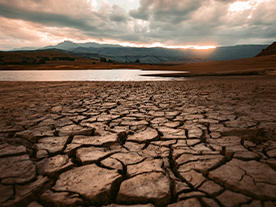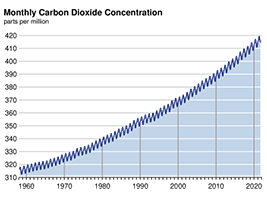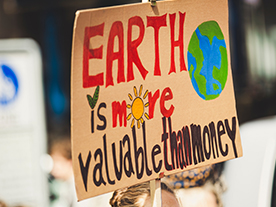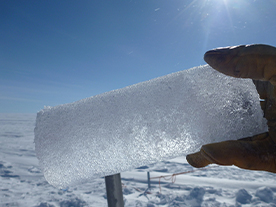Editor’s Message
Observing the world around us, we are noticing changes that contrast with our memories of earlier days both of us experienced in California. Frequent and prolonged Santa Ana wind conditions. Extended fire “season”. King tides just a little bit bigger each year. Heavier one-time rain dumps breaking up months and months of drought. Our respective jobs put us in direct contact with scientists who keep us on the edge of our seats, giving us the play-by-play of what it all means. Climate change is inevitable – and as evidence from the Earth reveals, recent changes are unprecedented.
We first met in 2014 as we were invited to work with the amazing teachers in the CA NGSS K-8 Early Implementation Initiative who took up the challenge to pave the way and help the state of California understand how the Next Generation Science Standards, NGSS, would unfold in classrooms. We had many conversations about the NGSS, and the potential they presented for teaching about climate change and human impact. We realized in these conversations that there were really two key things needed for teachers to feel confident in this new aspect of their science content standards: content knowledge and the support for how to teach such topics in a developmentally appropriate way in each grade band. Even under the best of circumstances, most practicing classroom teachers probably didn’t learn climate science as a part of their undergraduate degree and certainly didn’t delve into the most up-to-date science unless they sought out this information on their own. Even under the best of circumstances, teachers might have access to instructional materials they could use to teach the topic, but it was unlikely these would be well-aligned to the content standards and any curriculum they were now teaching.
These conversations ultimately prompted action on our part and launched a two-part strategy: the 2018 Climate Summit by the California Association of Science Educators (CASE, formerly California Science Teachers Association) in conjunction with the annual California Science Education Conference, and bring back the California Journal of Science Education for a special edition focusing on climate science. Our approach to the Climate Summit was practitioner-focused and included a pre-conference day and conference embedded focus speakers in which scientists from Scripps Institution of Oceanography and NASA’s Jet Propulsion Laboratory provided a series of presentations to help teachers understand the current science. Scientists and K-12 teachers also co-developed a series of short courses that presented a designed-for-NGSS learning sequence at each grade, K-12. This body of work, and acknowledgment to the many funders, supporters, and contributors can be found on the CASE website. The second part of the strategy, the journal, is scholarly and aims to further teacher understanding of the science and considerations for classroom implications.
We would like to thank the CASE staff and Board of Directors for their support and leadership. We also wish to express our deepest gratitude to our science, science and environmental education, and environmental justice communities for graciously agreeing to contribute to this body of work. We believe the classroom is the greatest unit of change that will inspire all of our youth to become scientifically literate adults who will have an even greater impact on the health, viability, and safety of our communities and environment. Change is inevitable, and we are confident that informed teachers and well-educated youth will be equipped to mediate, innovate, and inspire productive solutions.Jill Grace
2017-2019 CASE President
Statewide Director, K-12 Alliance, WestEdCheryl Peach
CASE Member
Director of Scripps Educational Alliances, Scripps Institution of Oceanography







